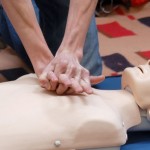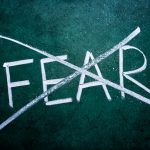What are CPR and AED
Cardiac arrest is a leading cause of death worldwide. However, timely intervention can effectively improve the survival rate of victims. This intervention can come in two forms – CardioPulmonary Resuscitation (CPR) and Automated External Defibrillator (AED) usage.
CPR is a life-saving technique to maintain blood flow and oxygenation in an individual suffering from cardiac arrest. When someone cannot breathe properly, or their heart has stopped beating, one should immediately give chest compressions to deliver oxygenated blood to the organs and mouth-to-mouth resuscitation to supply oxygen to the lungs. CPR is necessary when someone stops breathing, chokes or suffers severe trauma such as a heart attack.
On the other hand, AED is a portable device that delivers an electric shock to the heart, restoring its normal rhythm. CPR and AED certification is vital because it teaches how to give life-saving aid to someone in cardiac arrest. Quick intervention can boost the survival rate of victims by up to 60%.
Simple CPR’s online CPR courses are a valuable resource for anyone looking to earn their CPR certification. With a user-friendly interface and intuitive design, Simple CPR’s courses take the confusion out of learning life-saving techniques.
Types of CPR Techniques

There are three types of CPR techniques – hands-only, standard, and advanced. Hands-only CPR is beneficial when you witness someone collapse and find breathing difficulties. Standard CPR involves chest compressions and breaths, while advanced CPR involves medical equipment to restore heart function.
What is an AED?
An AED is a device to restore a heart’s normal rhythm by delivering an electrical shock. It analyses the heart rhythm and provides a jolt when necessary.
How does an AED work?

An AED analyses the heart’s rhythm and delivers a shock when the heart’s electrical activity is abnormal. This shock is necessary to restart the heart’s normal rhythmic pattern.
Need for CPR and AED Certification
Current statistics on cardiac arrest incidence suggest that it is the leading cause of death globally, accounting for over 7 million deaths annually. As such, quick intervention is crucial as every minute that passes without intervention results in a 10% decline in the chance of survival. Early intervention through CPR and AED can increase the survival rate by up to 60%.
CPR and AED certification equip individuals with the skills to intervene during a cardiac arrest, increasing survival chances effectively.
What is CPR certification?
CPR certification is acquiring the skills and knowledge required to perform CPR effectively. While anyone can get CPR certified, it is essential for individuals in nursing, child care, and other medical professions. To be certified, you must enroll in an accredited CPR training program. There are three levels of CPR certification: Basic Life Support (BLS), Cardiopulmonary Resuscitation, Automated External Defibrillator (CPR/AED), and First Aid/CPR/AED.
Simple CPR is the leading provider of online CPR certification, offering various options, including CPR recertification, BLS certification, first aid certification, and bloodborne pathogen certification. With Simple CPR, you can complete your certification in under an hour and print your certification card immediately. Plus, their services are cost-effective and efficient – making it easier than ever to gain the skills and knowledge needed to save a life.
What is AED certification?
AED certification is acquiring the skills and knowledge required to use an AED effectively.
Like CPR certification, anyone can get AED certified, but it is highly recommended for those in medical professions. There are three levels of AED certification: Lay Rescuer AED, Professional Rescuer AED, and AED Instructor.
The Benefits of CPR and AED Training and Certification

CPR and AED certification boost your confidence in emergencies, making you better equipped to act quickly and effectively. It prepares you for unexpected emergencies and to be the first responder to cardiac arrest victims, increasing their chances of survival and making it a valuable life skill.
In addition, CPR and AED certification can increase your career opportunities, as most jobs require some level of training in emergency response situations.
CPR and AED certifications increase the general welfare of society by equipping individuals with the ability to respond to cardiac emergencies.
Choosing the Right CPR and AED Training Provider
When selecting a training provider, you must consider several factors, including accreditation and certification validation, course content, and overall cost.
Training providers must offer a nationally recognized accreditation and certification that employers can verify. The cost of training is another critical consideration, and you should select an affordable and convenient option. The mode of delivery for the training program and the course duration plays a significant role in choosing the provider. You must select a course that will provide adequate content and a certification validity period.
Simple CPR offers online CPR and BLS certification classes available 24/7, 365 days a year, allowing you to learn at your own pace and on your own schedule. Its courses are based on the latest AHA guidelines, ensuring you have the most updated information. With a low cost and the ability to print a 2-year certification card immediately after passing the test, obtaining your CPR certification has never been easier or more convenient.
Tips for Effective CPR and AED Training
When selecting a training schedule, consider the time of day and duration that works best for you. Familiarize yourself with CPR and AED equipment, as it will boost your confidence and help you use it effectively. It’s essential to practice CPR and AED techniques in different age groups, considering the differences in body structure and muscle mass. And regularly refreshing the training content is necessary to remain updated on the latest practices and advancements in CPR and AED.
Simple CPR offers a range of online training courses that can give you the certification you need to feel confident in an emergency. From Adult-Child-Infant CPR to healthcare provider BLS, the courses are designed to equip you with the knowledge and skills to appropriately respond in a crisis. With Simple CPR’s easy-to-follow online classes and certifications, becoming prepared for an emergency is convenient.
CPR and AED Training in the Workplace

The Occupational Safety and Health Administration (OSHA) requires certain establishments to provide CPR and AED training to employees. CPR and AED-trained professionals are essential in the workplace as they can respond swiftly in cases of sudden cardiac arrest.
Employers can implement CPR and AED training by enrolling employees in accredited
courses or inviting experts to teach them.
Renewal of Certification

Certification renewal requirements differ from one certification organization to another, but it often involves proof of continuing professional development, online refresher courses, and skills assessments.
With Simple CPR, the recertification process is simple and easy, like the original certification process, but less time-consuming.
About Simple CPR
As a nationally accredited online CPR and BLS training class and certification provider, Simple CPR offers courses based on the latest AHA guidelines that can be taken any time of day or night and completed in under an hour. Their highly trained medical professionals have developed courses that are simple and easy to understand, making it easy for anyone to be prepared to act in a real emergency. In just a few clicks, you can become certified in CPR, BLS, and first aid and help make the world a safer place. With over 20 years of experience providing certification to hundreds of thousands of people worldwide, it’s no wonder that Simple CPR is the leader in online safety education.



